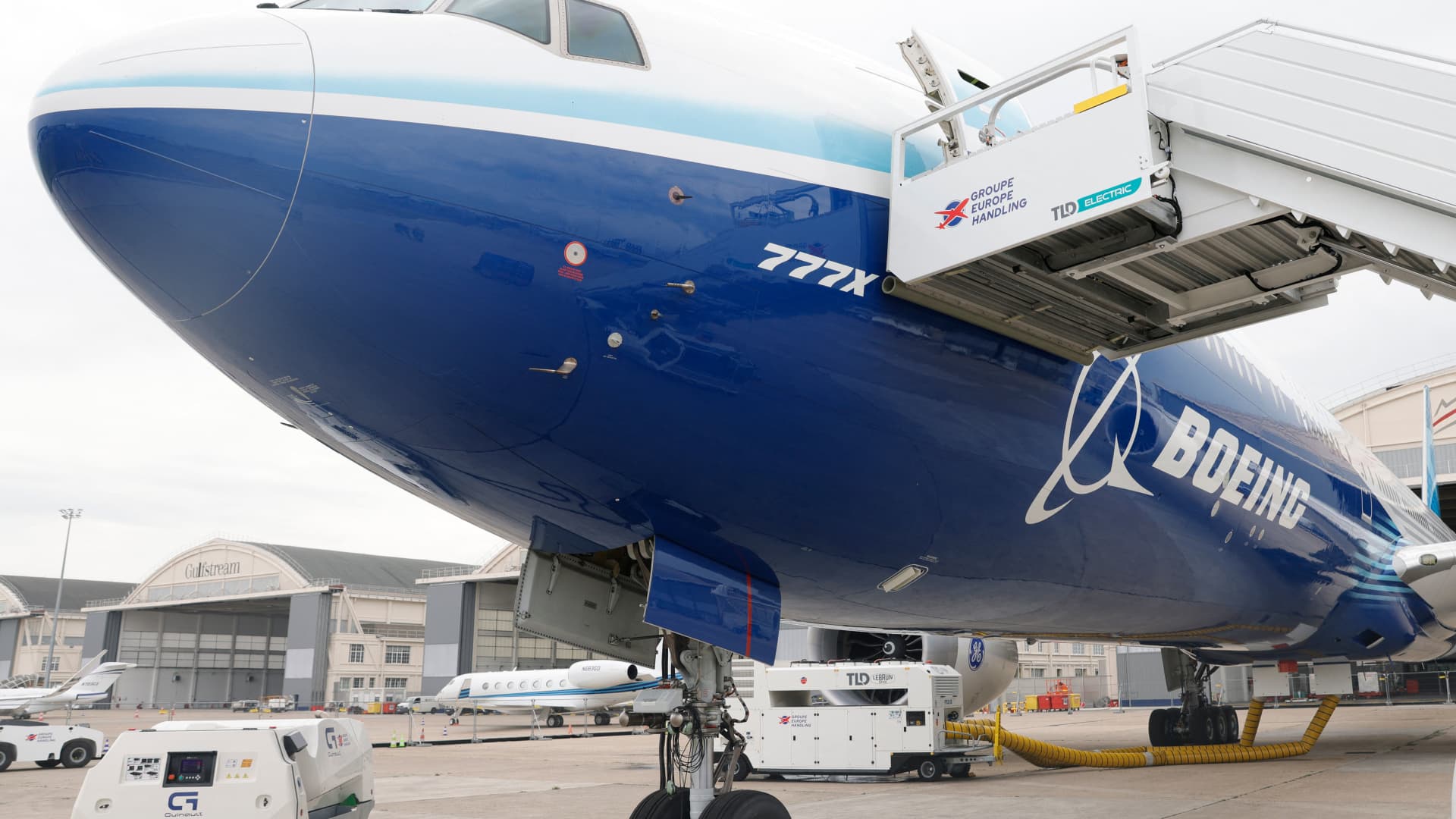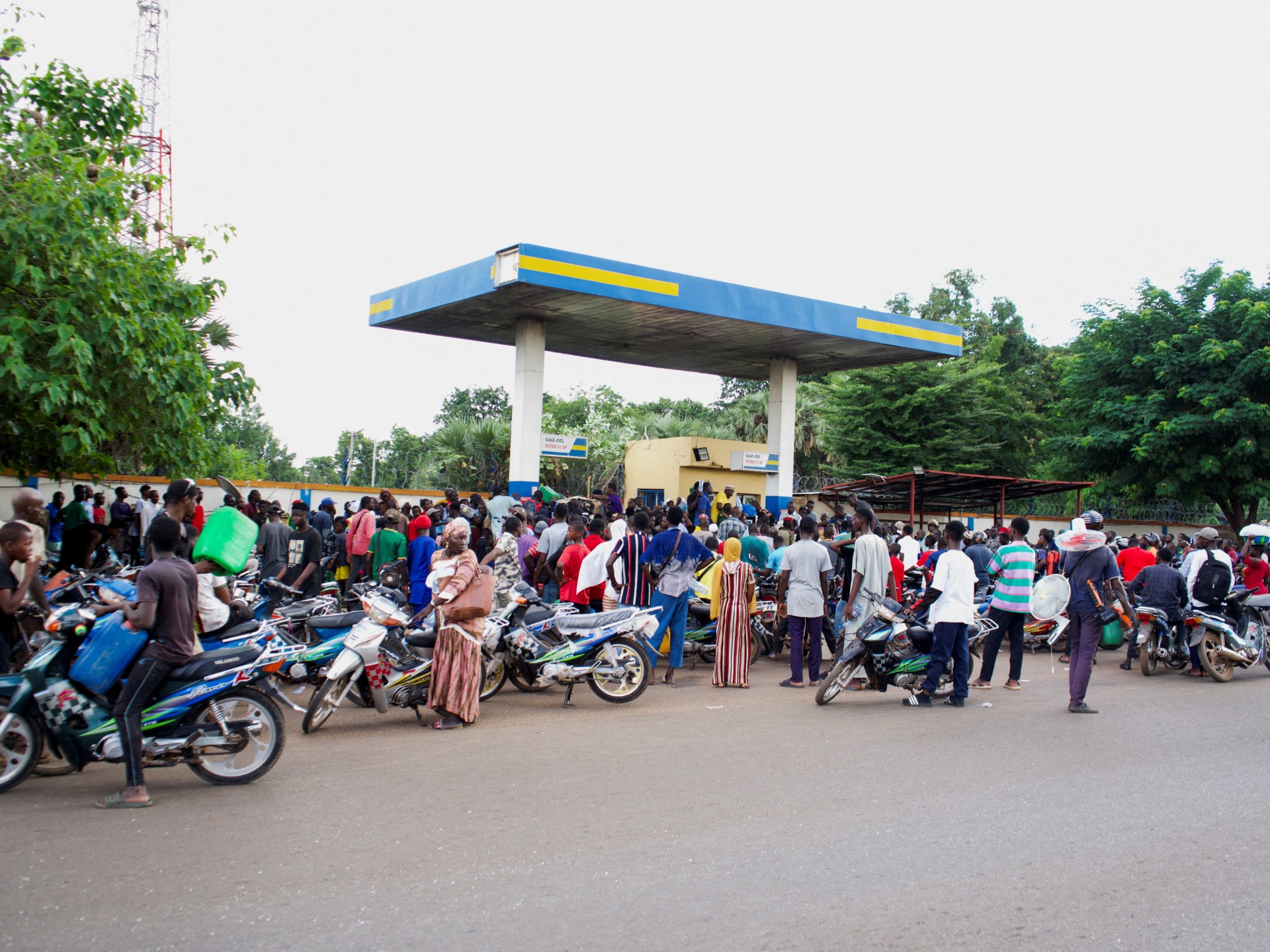Geoffroy Van Der Hasselt | AFP | Getty Images
Boeing is on track to deliver the most aircraft this year since 2018, before two crashes grounded its best-selling jetliner, the Covid pandemic hit supply chains and a host of manufacturing crises drove years of losses at the top U.S. exporter.
CEO Kelly Ortberg, an aerospace veteran who came out of retirement to helm Boeing in August 2024, has worked to steady the manufacturer’s sprawling supply chain and cash-generating production lines.
The 777X, an updated version of its 777 plane, took its first flight nearly six years ago but still hasn’t won regulator approval. Boeing says it now expects the first delivery in 2027, leading to the non-cash charge.
A Boeing 777x aircraft during an aerial display on the opening day of the Farnborough International Airshow in Farnborough, UK, on Monday, July 18, 2022.
Jason Alden | Bloomberg | Getty Images
“While there’s still more work to do to advance our development programs, particularly on our commercial development and certification programs, we’re seeing positive signs across our business, and I’m proud of how we are coming together to turn our company around,” Ortberg said in a staff note.
Still, Boeing generated free cash flow of $238 million, its first time in the black on that metric since late 2023.
Boeing lost $4.78 billion, or $7.14 a share, in the three months ended Sept. 30. That’s better than a $5.76 billion loss a year earlier. On an adjusted basis, the company reported a loss of $7.47 a share. Revenue jumped 30% to $23.27 billion for the third quarter, up from $17.84 billion a year ago and ahead of analysts’ estimates.
A year ago, Boeing machinists were on strike in a contract impasse that crippled production at the majority of the company’s commercial airplane factories.
Here’s how Boeing performed for the third quarter based compared with analysts’ estimates compiled by LSEG:
- Loss per share: $7.47 per share adjusted vs. a loss of $4.59 expected
- Revenue: $23.27 billion vs. $21.97 billion expected
Airline customers have said they’ve seen an improvement at Boeing, with more accurate delivery projections, a change in tune from the complaints of prior years.
In the first nine months of the year, Boeing delivered 440 airplanes, up from 291 in the same period last year. Airlines and other customers pay for the bulk of the planes when they receive them, so increasing the delivery pace is key for Boeing to stem an outflow of cash totaling close to $17 billion since the start of 2024 through June of this year.
Last year was supposed to be a turnaround year for Boeing, but a midair blowout of a door panel in January 2024 resulted in a near catastrophe and increased federal scrutiny that slowed production.
But Boeing has made progress. Earlier this month, the Federal Aviation Administration lifted a production cap for Boeing’s 737 Max to 42 a month from 38, a restriction it put in place after the accident.
The FAA is also now allowing Boeing to perform final signoffs on some of its aircraft, a sign of increased confidence from its regulator.
Boeing’s commercial unit revenue rose 49% from a year earlier to $11.09 billion, though it still had negative operating margins. Its defense unit generated $6.9 billion, up 25% from last year in the third quarter, with a 1.7% operating margin, while its profitable global services business brought in nearly $5.4 billion, a 10% increase.
The company isn’t out of the woods. Its Max 7 and Max 10 variants and the 777X are years behind schedule.
And about 3,200 of its defense unit workers who make F-15 fighter jets and missile systems have been on strike since the summer as the two sides have yet to reach a new contract.















Leave a Reply